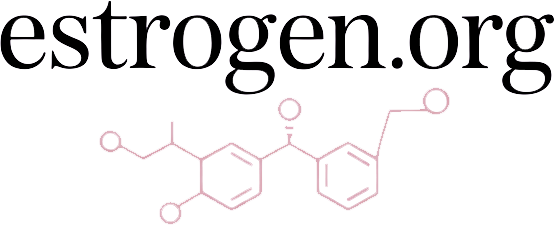Estrogen Therapies
Understanding when, why, and how estrogen therapy is used — and what to expect.
What Is Estrogen Therapy?
Estrogen therapy is a medical treatment that supplements or replaces estrogen in the body. It's prescribed when natural levels are low or absent due to menopause, surgical removal of the ovaries, certain medical conditions, or as part of gender-affirming care.
The primary goal is to address symptoms and health concerns related to estrogen deficiency, such as hot flashes, vaginal dryness, bone loss, and mood changes. It can also be used to promote feminine physical characteristics for transgender women.
When combined with progesterone for women who still have a uterus, it's called hormone replacement therapy (HRT). The therapy comes in various forms, including pills, patches, creams, and injections, each with specific benefits and considerations.
Who Might Benefit from Estrogen Therapy?
Estrogen therapy can be beneficial for various groups of people, each with unique health needs and treatment goals.
Women
Estrogen therapy helps manage menopause symptoms including hot flashes, night sweats, vaginal dryness, and mood changes. It also helps prevent bone loss (osteoporosis) that can occur with lower estrogen levels after menopause.
Learn about Estrogen in WomenTransgender Women
As part of gender-affirming hormone therapy, estrogen helps develop feminine physical characteristics like breast growth, softer skin, reduced body hair, and fat redistribution to create a more feminine body contour.
Gender-Affirming Hormone TherapyMen
In some cases, men with estrogen deficiency due to genetic conditions, hormone imbalances, or side effects from testosterone therapy may benefit from estrogen supplements to maintain bone health and cognitive function.
Learn about Estrogen in MenTypes of Estrogen Therapy
Estrogen therapy comes in various forms, each with unique benefits and considerations depending on your needs.
Pills
Oral tablets taken daily. The most common form of estrogen therapy, convenient but passes through the liver which can affect potency.
Widely used for menopause symptoms
Patches
Applied to the skin and changed once or twice weekly. Delivers estrogen directly into the bloodstream, bypassing the liver.
Good for those with liver concerns or who prefer not to take pills
Gels & Creams
Applied directly to the skin daily. Provides a steady supply of estrogen through the skin into the bloodstream.
Convenient for those who prefer topical application
Vaginal Rings & Tablets
Inserted into the vagina to provide localized estrogen. Primarily treats vaginal symptoms with minimal systemic absorption.
Women primarily experiencing vaginal dryness or discomfort
Injections
Administered via intramuscular or subcutaneous injection. Provides high levels of estrogen quickly.
Often used in gender-affirming care for transgender women
Benefits of Estrogen Therapy
When prescribed appropriately, estrogen therapy can provide significant relief and health benefits.
Relief from Hot Flashes & Night Sweats
Significantly reduces the frequency and intensity of these common menopausal symptoms.
Protection Against Bone Loss
Helps maintain bone density and reduces the risk of osteoporosis-related fractures in later life.
Improved Mood & Sleep
May help stabilize mood fluctuations and improve sleep quality disrupted by hormonal changes.
Vaginal Health Support
Alleviates vaginal dryness, itching, and discomfort while improving tissue elasticity and lubrication.
Gender-Affirming Changes
For transgender women, promotes development of feminine physical characteristics including breast tissue and softer skin.
Cognitive Function
Some evidence suggests potential benefits for memory and cognitive function, though research is ongoing.
Risks & Considerations
While estrogen therapy offers many benefits, it's important to understand the potential risks.
Potential risks include:
- Blood clots – Increased risk of deep vein thrombosis and pulmonary embolism
- Breast cancer – May increase risk, particularly with long-term use and combined HRT
- Stroke – Slightly elevated risk, particularly in older patients or those with existing risk factors
- Gallbladder disease – Increased risk of gallstones and inflammation
Estrogen therapy may not be recommended for individuals with:
- History of breast, ovarian, or endometrial cancer
- History of blood clots or stroke
- Liver disease
- Unexplained vaginal bleeding
- Certain types of heart or cardiovascular disease
Always consult a healthcare professional before beginning any hormone therapy.
Alternatives & Supplements
For those who cannot or choose not to use hormone therapy, there are alternative approaches that may help manage symptoms.
Lifestyle Changes
- Regular exercise to improve mood and sleep
- Stress reduction techniques like meditation and yoga
- Avoiding triggers for hot flashes (spicy foods, alcohol, caffeine)
- Dressing in layers and keeping the environment cool
Dietary Approaches
- Foods with phytoestrogens (soy, flaxseed)
- Calcium and vitamin D rich foods for bone health
- Omega-3 fatty acids for mood support
- Adequate protein intake for muscle maintenance
Non-Hormonal Medications
- Certain antidepressants (SSRIs/SNRIs) for hot flashes
- Gabapentin or clonidine for night sweats
- Ospemifene for vaginal symptoms
- Bisphosphonates for bone preservation
Note: While these options may provide relief for mild symptoms, they are not replacements for medical-grade hormone therapy when clinically indicated.
Discuss all approaches with your healthcare provider to create a personalized plan for your specific needs.
Frequently Asked Questions
Common questions about estrogen therapy and hormone treatments.
